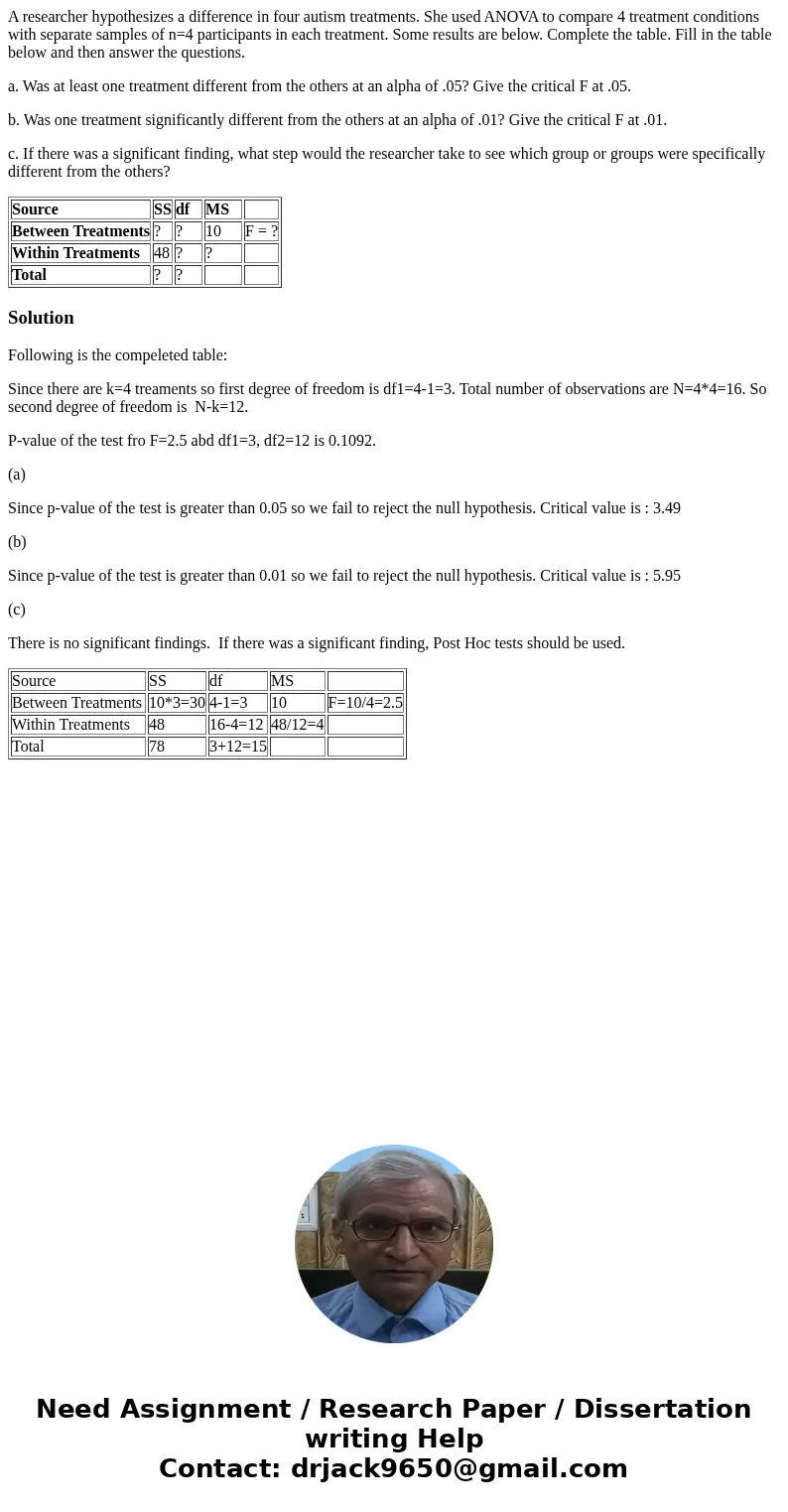A researcher hypothesizes a difference in four autism treatm
A researcher hypothesizes a difference in four autism treatments. She used ANOVA to compare 4 treatment conditions with separate samples of n=4 participants in each treatment. Some results are below. Complete the table. Fill in the table below and then answer the questions.
a. Was at least one treatment different from the others at an alpha of .05? Give the critical F at .05.
b. Was one treatment significantly different from the others at an alpha of .01? Give the critical F at .01.
c. If there was a significant finding, what step would the researcher take to see which group or groups were specifically different from the others?
| Source | SS | df | MS | |
| Between Treatments | ? | ? | 10 | F = ? |
| Within Treatments | 48 | ? | ? | |
| Total | ? | ? |
Solution
Following is the compeleted table:
Since there are k=4 treaments so first degree of freedom is df1=4-1=3. Total number of observations are N=4*4=16. So second degree of freedom is N-k=12.
P-value of the test fro F=2.5 abd df1=3, df2=12 is 0.1092.
(a)
Since p-value of the test is greater than 0.05 so we fail to reject the null hypothesis. Critical value is : 3.49
(b)
Since p-value of the test is greater than 0.01 so we fail to reject the null hypothesis. Critical value is : 5.95
(c)
There is no significant findings. If there was a significant finding, Post Hoc tests should be used.
| Source | SS | df | MS | |
| Between Treatments | 10*3=30 | 4-1=3 | 10 | F=10/4=2.5 |
| Within Treatments | 48 | 16-4=12 | 48/12=4 | |
| Total | 78 | 3+12=15 |

 Homework Sourse
Homework Sourse